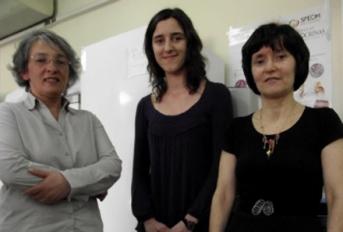Associação Portuguesa de Investigação em Cancro
Mitochondrial alterations in radiation-induced basal cell carcinomas
Mitochondrial alterations in radiation-induced basal cell carcinomas

X-ray scalp epilation for tinea capitis (scalp ringworm) treatment was used in 1950-1960. The observation of individuals submitted to this therapeutic approach has shown an increase head and neck tumours prevalence, namely basal cell carcinomas (BCCs).
As we had access to a cohort of individuals submitted to this treatment in the North of Portugal, we searched for mutations in the mitochondrial DNA regulatory region (D-Loop) in a subgroup of individuals from the original cohort that developed these tumours. Our results have shown that the D-Loop D310 mutation rate was significantly higher in irradiated BCCs and was associated with a higher irradiation dose. As the infiltrative subtype of BCC, considered to be more aggressive, was significantly more frequent in irradiated patients, our results may suggest radiation-induced BCCs as more aggressive tumours.
Authors and affiliations:
Paula Boaventura1, Dina Pereira1, Adélia Mendes1, Rui Batista1, André Ferreira da Silva1, Isabel Guimarães3, Mrinalini Honavar3, Jose´ Teixeira-Gomes1, José Manuel Lopes1,2, Valdemar Máximo1,2, Paula Soares1,2
1 - IPATIMUP – Institute of Molecular Pathology and Immunology of the University of Porto, R. Roberto Frias s/n, 4200-465 Porto, Portugal
2 - Medical Faculty, University of Porto, Alameda Prof. Hernâni Monteiro, 4200-319 Porto, Portugal
3 - Hospital Pedro Hispano, Rua Dr. Eduardo Torres, 4464-513 Senhora da Hora, Portugal
Abstract:
Background - Basal cell carcinoma (BCC) is the most frequent skin cancer. An elevated prevalence of BCC has been associated with radiation, namely after the Tinea capitis epilation treatment, being these tumors described as more aggressive. Mitochondrial DNA (mtDNA) mutations have been reported in many human tumors, but their occurrence in BCC is poorly documented.
Objective - The purpose of this work was to evaluate BCC histological subtypes in individuals subjected to X-ray epilation for Tinea capitis treatment when compared to non-irradiated patients. Moreover we also wanted to evaluate mitochondrial D-Loop instability in both groups of BCCs in order to compare the frequency of D-Loop mutations in post-irradiation BCC versus sporadic BCC.
Methods - 228 histological specimens corresponding to BCCs from 75 irradiated patients and 60 non-irradiated patients were re-evaluated for histological subtype. Subsequently, we sequenced the D-Loop 310 repeat in blood, oral mucosa, tumor lesions and, whenever available, non-tumoral adjacent tissue from these patients. Results: The infiltrative subtype of BCC, considered to be more aggressive, was significantly more frequent in irradiated patients. BCC D-Loop D310 mutation rate was significantly higher in irradiated BCCs than in the non-irradiated ones. Moreover, it was associated with a higher irradiation dose. The presence of mtDNA heteroplasmy in patients’ blood was associated with a higher mutation rate in the BCCs suggesting that a more unstable genotype could predispose to mtDNA somatic mutation. Conclusions - Our results suggest that radiation-induced BCCs may be considered to be more aggressive tumors. Further studies are needed to clarify the role of mtDNA D-Loop mutations in tumors from irradiated patients.
Journal:
Journal of Dermatological Science
Link:
http://www.sciencedirect.com/science/article/pii/S0923181113003071




